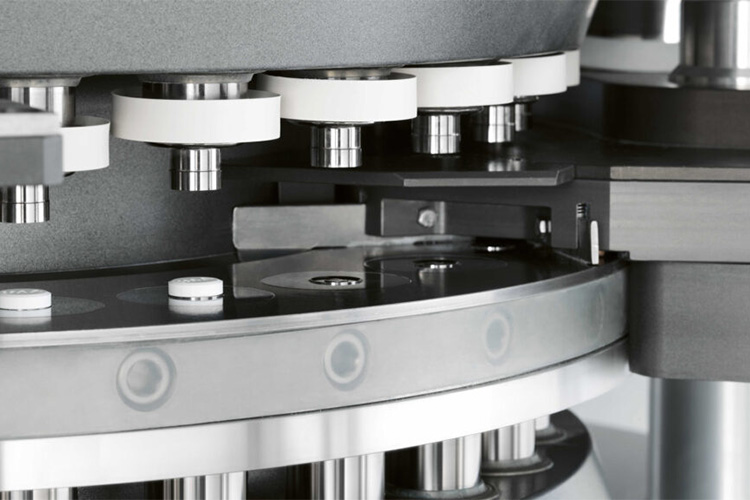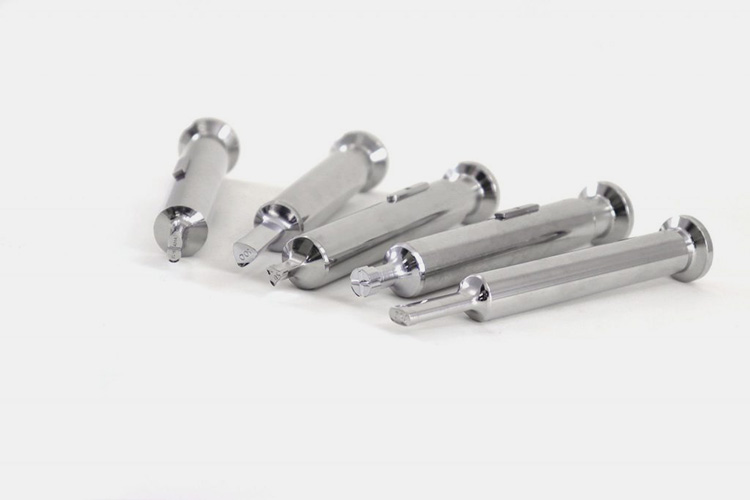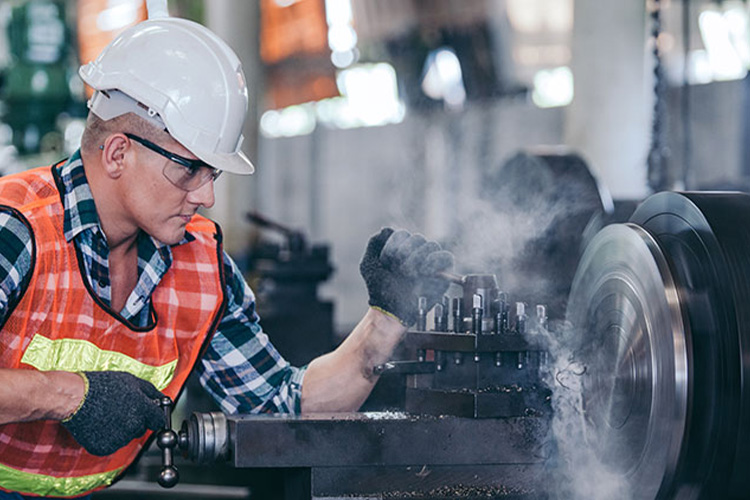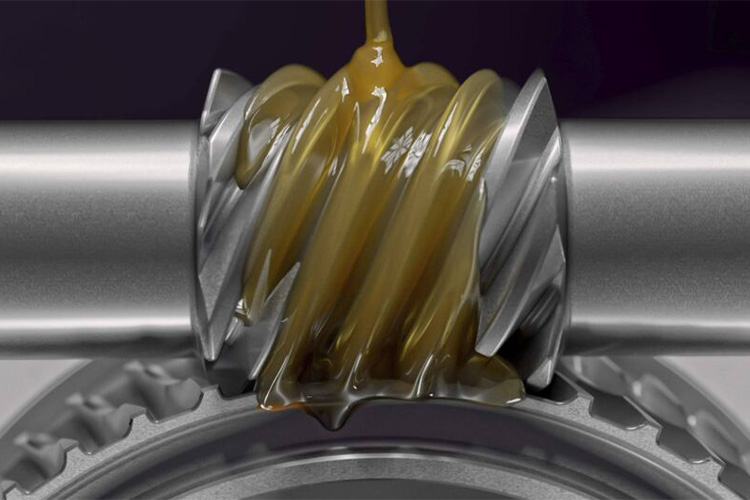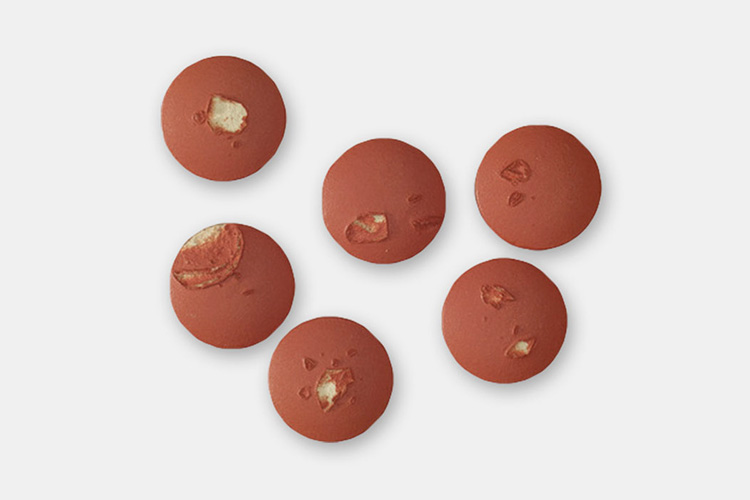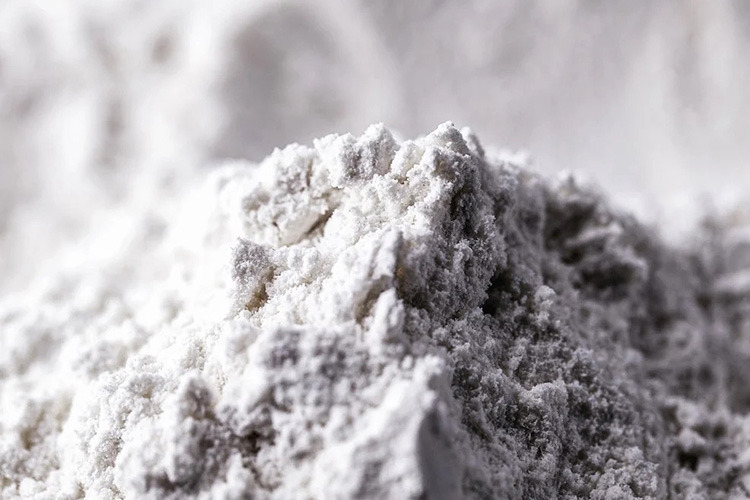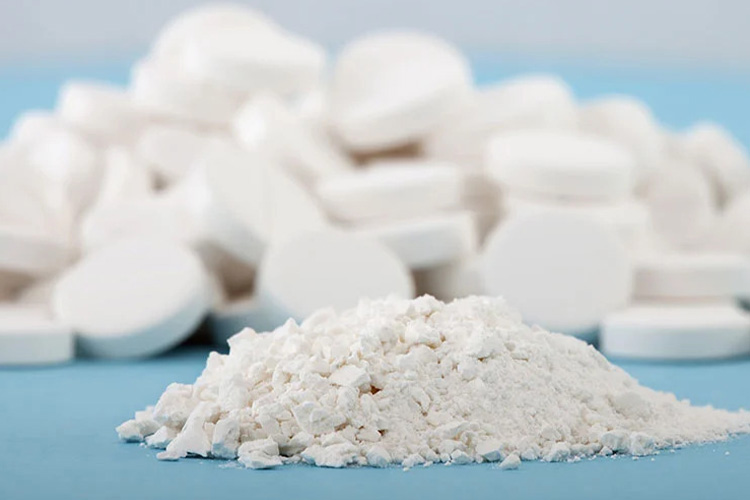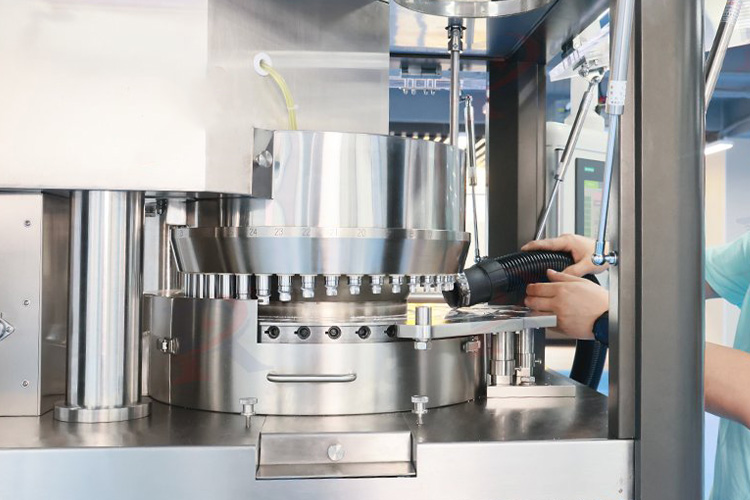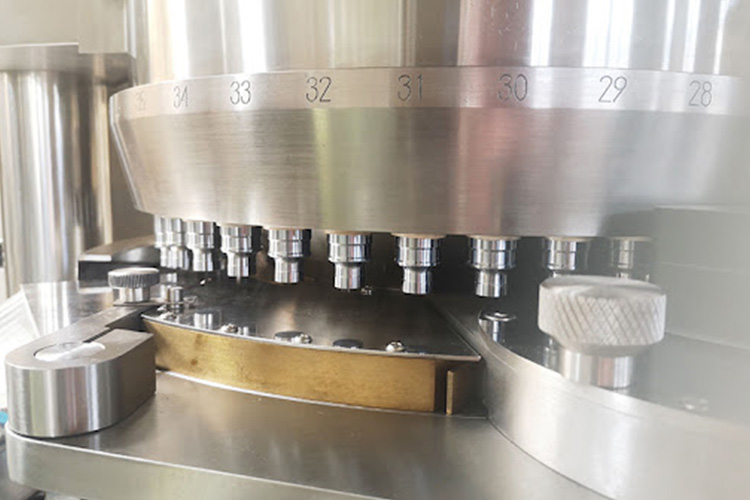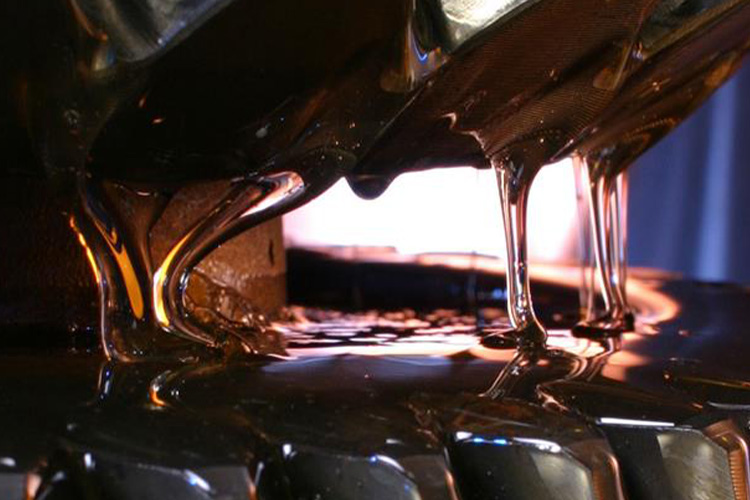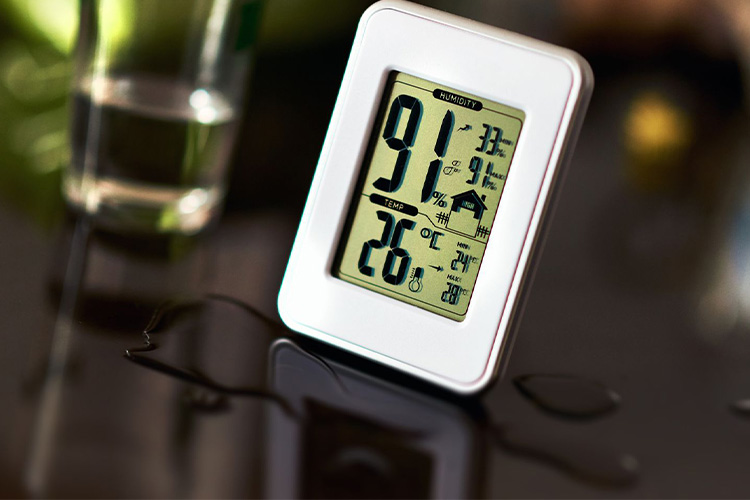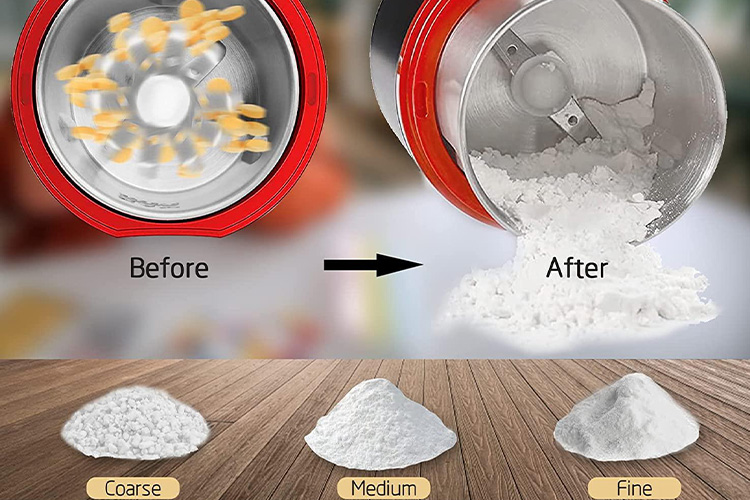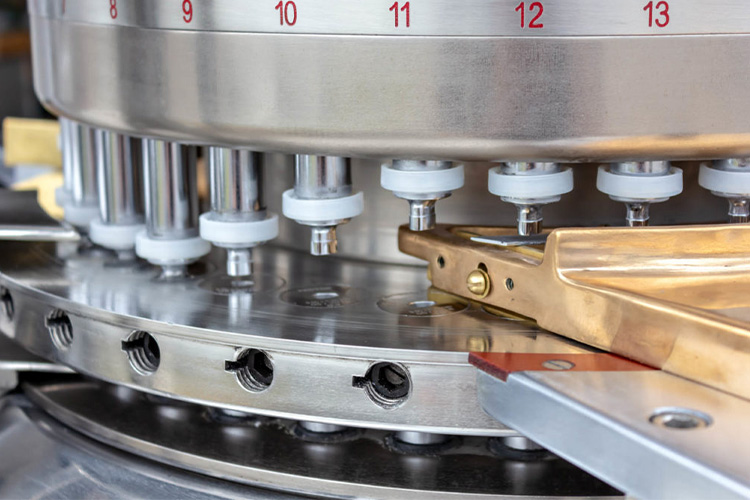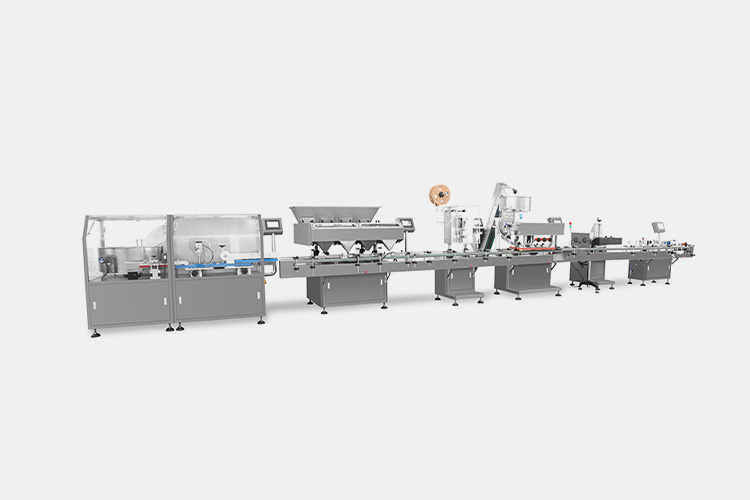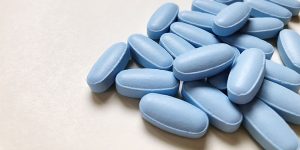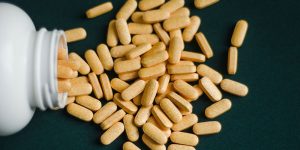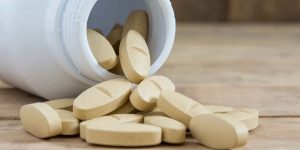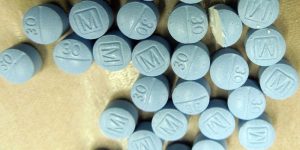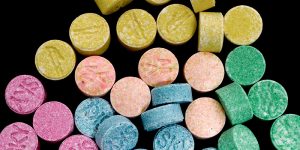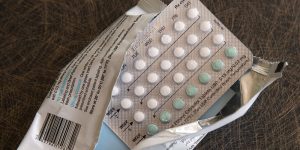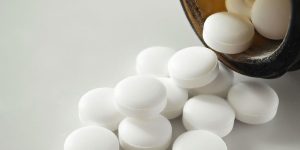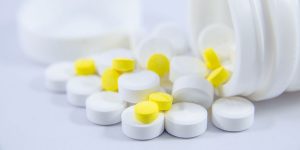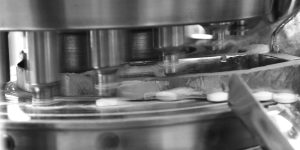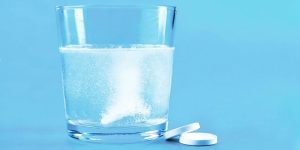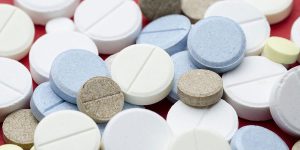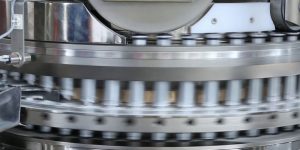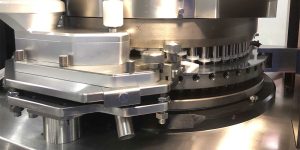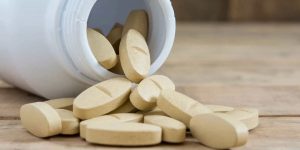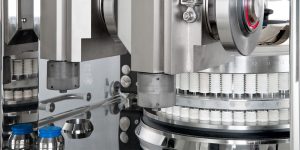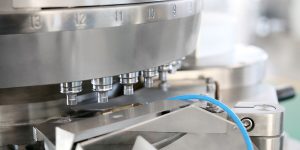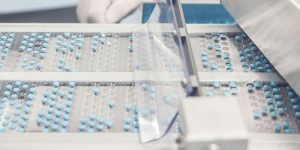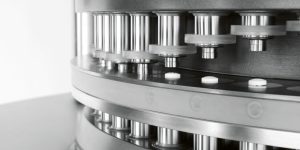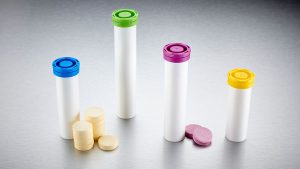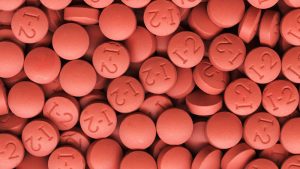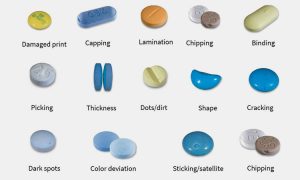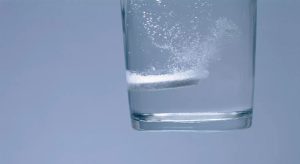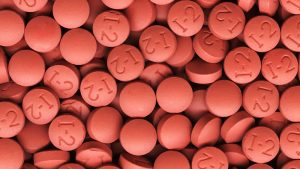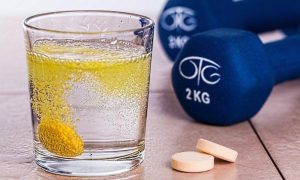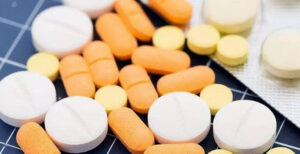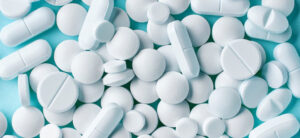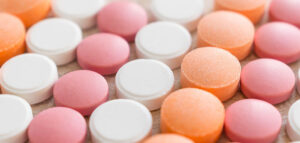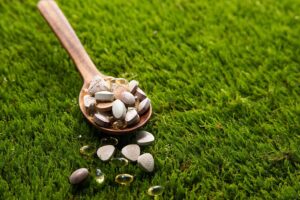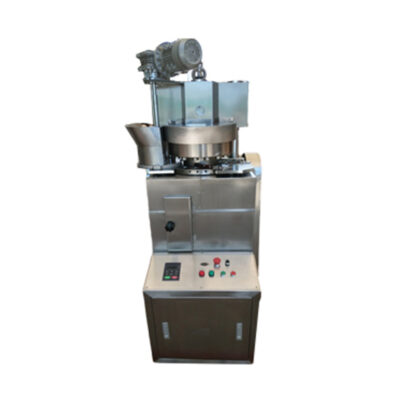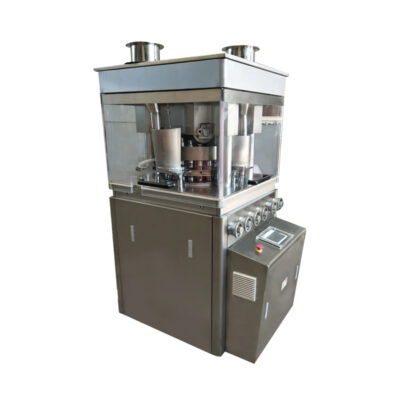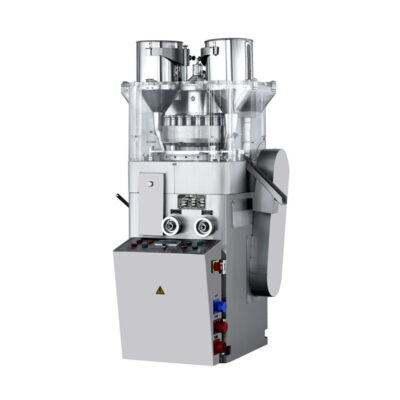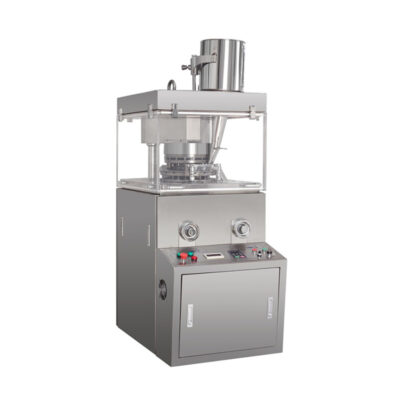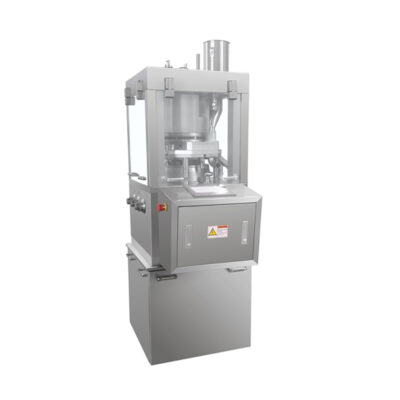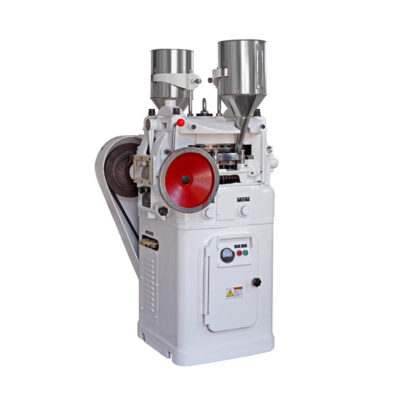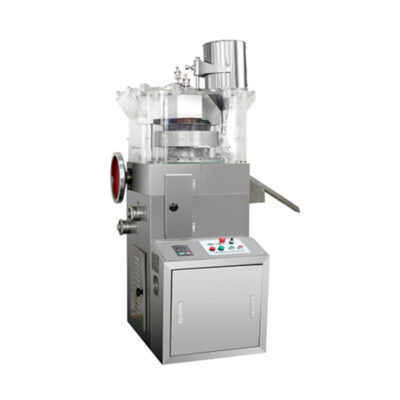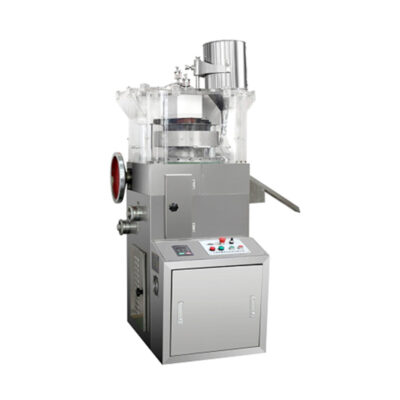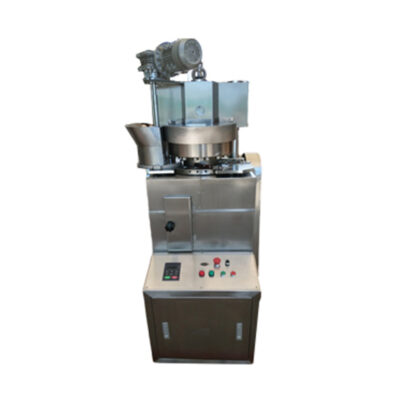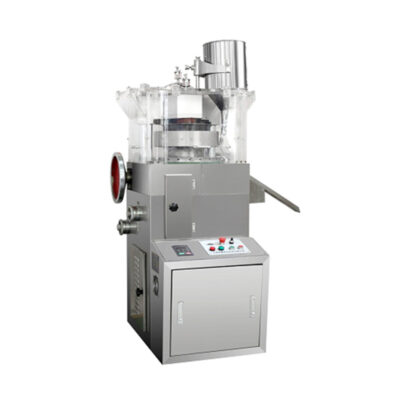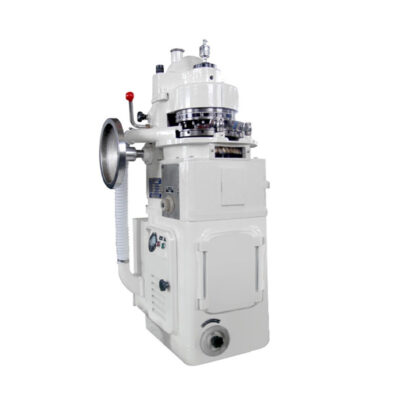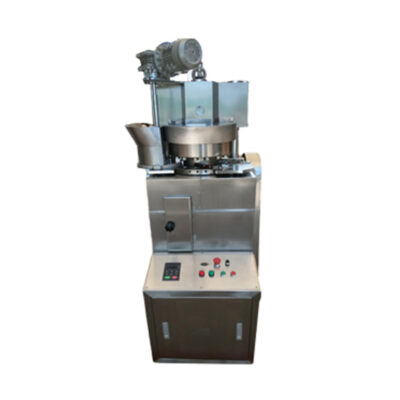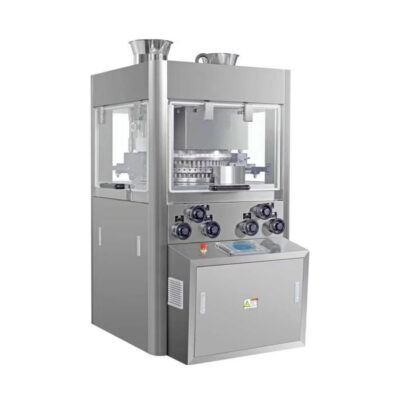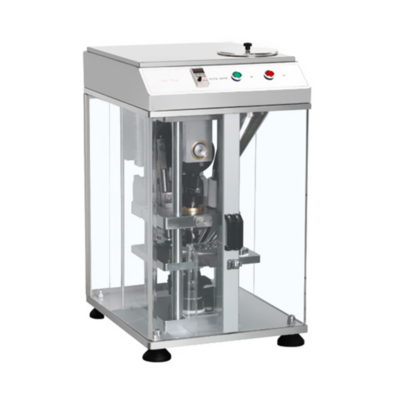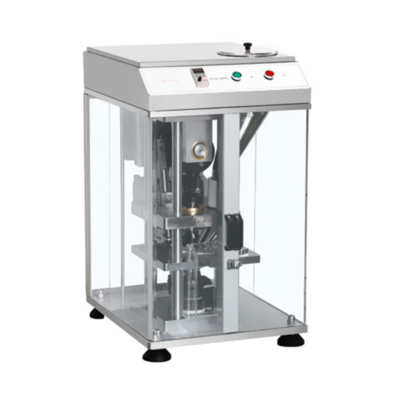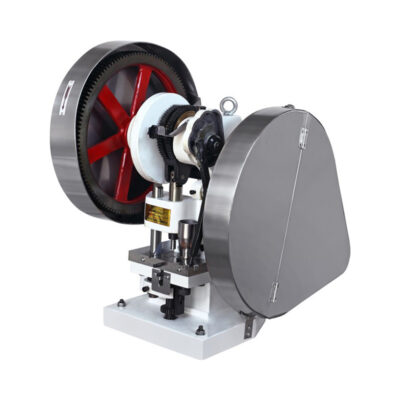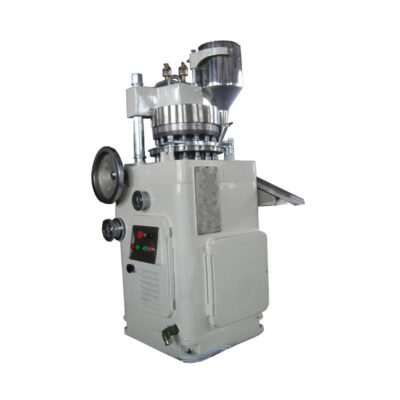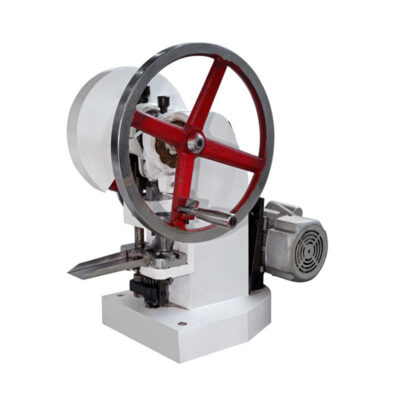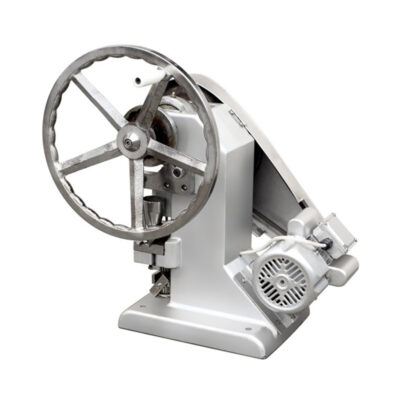How To Solve The Punch Sticking In Tablet Manufacturing?
In pharmaceutical production, tablet pressing is a common process. However, during the process, many users may encounter issues with punch sticking. Punch sticking is one of the common problems during the growth process of tablets, which can seriously affect the quality of the final tablet production.
The occurrence of punch sticking is not only a problem with machine, but also related to many factors. Do you feel headache about tablet punch sticking? Let’s take a look together at how to solve the problem of tablet punch sticking!
1.What Is the Punch Sticking in Tablet Manufacturing?
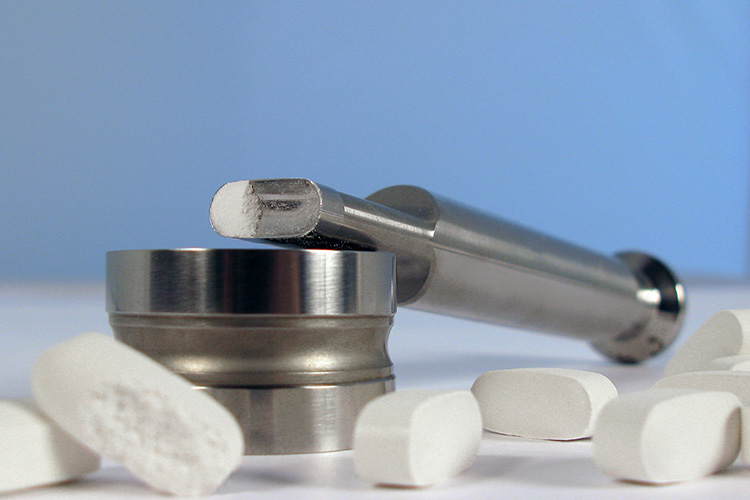
Punch Sticking - Sourced: Scientist Live
During tablet pressing, the fine powder on the surface of the tablet is adhered by the punch and die, resulting in uneven and dented surfaces. The punch of the shell is more prone to sticking and punching. Some raw materials themselves have high sticking, and even with the addition of lubricants, it is difficult to completely eliminate the phenomenon of punch sticking.
2.What Are the Common Types of Punch Sticking in Tablet Manufacturing?
Common Types of Punch Sticking - Sourced: IMA Group
On the front line of drug production, various problems are often encountered, and it is these details that can often affect the quality level of the product. What are the common types of punch sticking? Let’s take a look together.
| Types | Description |
| Filming
|
Filming refers to the adhesion of only one layer of material to the surface of the punch, which usually does not cause obvious defects in the tablet, but can result in a dull and dull surface of the tablet. |
| Sticking | Sticking refers to the process of multiple layers of material adhering to the surface of a punch, which may result in significant unevenness and defects on the surface of the tablet. |
| Picking | Picking usually refers to the phenomenon where the medicinal powder is stuck inside the engraved or embossed pattern. |
3.What Are the Main Causes of Punch Sticking In Tablet Manufacturing?
Do you know the reason for the occurrence of punch sticking in tablet manufacturing? The specific reasons are as follows.
Instrument reasons
Instrument Reasons - Sourced: Elizabeth Companies
Uneven length of the punch, wear in the middle, local protrusion, inward curling of the punch, deep engraving marks, rough or damaged surface of the die, unclean or stained with rust proof or lubricating oil, and new punch with sharp edges but not forming a round and blunt shape can all increase the adhesion force between the punch and the tablet surface, leading to adhesive punching.
Improper operation
Improper Operation - Sourced: ISHN.com
The powder used for tablet press machine is subjected to static drying, such as atmospheric pressure box drying, infrared drying, and microwave drying. The resulting powder contains less fine powder, while the powder obtained by boiling drying contains more fine powder.
In addition, during the drying process, the powders rub against each other, and the powder particles without or with less adhesive are easily exposed. When pressing, the adhesion force between these powder particles is insufficient, and they will adhere to the punch.
Inappropriate temperature and humidity
As the compression time prolongs, the temperature of the punch may even exceed the melting point of butyl paraben, causing the melting of the melting components and greatly increasing the adhesion between the tablet surface and the punch surface, resulting in adhesive impact.
Excessive indoor relative humidity or trace amounts of moisture adhering to the surface of the punch can increase the moisture content of the drug powder, causing adhesive flushing.
Insufficient lubricant
Insufficient lubricant - Sourced: Interfacial Chemistry
If the amount of lubricant is insufficient, as the compression time prolongs, the heat of the punch increases, which will increase the adhesion between the punch and the tablet, leading to adhesive punching.
If the lubricant is unevenly distributed, the adhesion force between the local area of the tablet and the punch is greater than the adhesion force between the powder particles, and the powder particles on the surface of the tablet will adhere to the punch, causing the shape of the compressed tablet to be damaged.
4.What Problems Can Tablet Punch Sticking Cause?
Tablet punch sticking can cause many problems and lead to a series of issues in tablet production.
Affectingtablet molding
Excessive sticking can lead to excessive agglomeration of material particles, resulting in high friction between particles during compression, increased internal stress within the tablet, and potential issues such as fragmentation and delamination.
Insufficient sticking, weak binding force between particles, difficulty in forming tablets, easy occurrence of loose tablets, and insufficient hardness and strength of tablets.
Affectingthe weight difference of tablets
Affecting the Weight Difference of Tablets - Sourced: PharmaEducation
Excessive sticking and poor material flowability can lead to uneven filling of the mold holes, resulting in significant differences in tablet weight. If the sticking is too small, the particles are easily dispersed, which can also cause inconsistent filling of the mold holes and affect the weight accuracy of the tablets.
Affectingthe disintegration and dissolution of tablets
The sticking is too high, the internal structure of the tablet is tight, making it difficult for water to penetrate into the interior of the tablet, prolonging the disintegration time, and slowing down the drug dissolution rate.
Low sticking and loose tablet structure may result in fragmentation and powder loss during storage, leading to rapid drug exposure during disintegration. However, unstable tablet structure may also affect drug dissolution behavior.
Affectingthe appearance of tablets
Affecting the Appearance of Tablets - Sourced: Colorcon
Punch sticking will result in uneven surface of tablets with defects such as spots and rough surfaces. It may also cause material to adhere to the punch, affecting the normal progress of tablet pressing.
If the sticking is too low, the surface of the tablet may be uneven, with problems such as missing corners and edges, which affect the appearance quality and aesthetics of the tablet.
5.How to Improve Material Factors to Solve Punch Sticking In Tablet Manufacturing?
As the basic material carrier for the formation of formulations, the quality of materials directly affects the quality of drugs.
Control material humidity
Control Material Humidity - Sourced: AZoM
Many materials have a certain degree of moisture absorption, so it is prone to sticking and flushing. For example, materials containing lactose, starch, and other components may adhere to the punch during the compression process if their moisture content exceeds a certain limit.
Therefore, for materials that are prone to moisture absorption, their moisture content should be strictly controlled. Generally, drying treatment can be carried out, such as drying at a suitable temperature and time, drying materials in an oven at 50-60 ℃, and controlling the moisture content within a suitable range, such as 1% -3% (specific values vary depending on the material).
In terms of production environment, it is necessary to control the relative humidity in the production workshop. Dehumidification equipment can be installed to maintain the relative humidity in the workshop within the range of 40% -60%, in order to reduce the possibility of material moisture absorption.
Optimizingthe particle size and distribution of materials
Optimizing the Particle Size And Distribution Of Materials - Sourced: BulkInside
The particle size and distribution of materials also have an impact on sticking and impact. If the particle size of the material is uneven and there is too much fine powder, it is easy for the fine powder to fill between the punch and the die hole during compression, increasing the risk of sticking and punching.
The response method is to crush and screen the materials to make the particle size distribution more uniform. Usually, multi-stage screening equipment can be used, such as first using a coarse sieve to remove larger particles, and then using a fine sieve (such as an 80-100 mesh sieve) to screen materials with suitable particle size ranges, reducing the proportion of fine powder.
At the same time, some flow aids can also be added, such as micro silica gel, which can improve the flowability of materials and prevent fine powder aggregation. The general addition amount is 0.1% -0.5%.
Adjustingmaterial formula
Adjusting Material Formula - Sourced: Matcon
Some material components may interact with each other, leading to adhesive flushing. For example, in some compound tablets, chemical reactions or physical adsorption may occur between the drug components and excipients. If the main drug is a viscous extract, mixing it with certain excipients may enhance its sticking.
At this point, it is possible to consider replacing excipients or adjusting the ratio of the main drug to excipients. For example, replacing starch dextrin with microcrystalline cellulose, because microcrystalline cellulose has good compressibility and flowability, and is not easily prone to sticking.
Alternatively, the proportion of hydrophobic excipients can be appropriately increased, such as magnesium stearate, which can form a hydrophobic film on the surface of the particles, reducing the possibility of sticking and impact. The general addition amount is 0.3% -1%.
6.How to Optimize Tablet Press Machine And Process Parameters to Solve the Punch Sticking In Tablet Manufacturing?
To solve the problem of tablet punch sticking, the tablet press machine can be adjusted to address this issue.
Clean and maintain the punch and mold
Clean and Maintain The Punch And Mold - Sourced: Ruida Packing
During the tablet press process, there may be residual materials on the surface of the punch and mold. If not cleaned in time, the residual materials will gradually accumulate, increasing the probability of sticking to the punch.
Therefore, it is necessary to regularly clean the punch and mold. Suitable cleaning agents, such as specialized mold cleaners, can be used to gently wipe the punch and mold surface with a soft cloth or brush to remove any remaining materials.
At the same time, it is necessary to check whether there is any damage on the surface of the punch and mold, such as scratches, pits, etc. These defects will make the material easier to adhere. For damaged punches and molds, they should be replaced or repaired in a timely manner.
Adjustingthe press pressure and speed
Adjusting the Press Pressure And Speed - Sourced: Pharmaceutical Machinery
When the press pressure is too high, the material is squeezed too tightly, which may cause the material to overflow from the edge of the mold hole and adhere to the punch. The press pressure and speed can be optimized through experiments.
Generally, starting from a lower pressure and speed, gradually increasing the pressure, observing the quality of the tablets, and finding the optimal pressure range that can ensure the hardness and appearance of the tablets are qualified without any sticking or impact.
For the press speed, it can usually be adjusted according to the properties of the material and the performance of the equipment, such as reducing the press speed from a high of 100 tablets per minute to 60-80 tablets per minute.
Reasonably selecting lubricants
Reasonably Selecting Lubricants - Sourced: Machinery Lubrication
Choosing the appropriate lubricant according to the actual situation and strictly controlling its dosage to achieve good lubrication effect. The specialized lubricating oil designed for the track of the tablet press has excellent lubrication performance and stability, which can ensure the efficient and stable operation of the tablet press machine.
7.How to Control Temperature and Humidity to Solve the Punch Sticking In Tablet Manufacturing?
Temperature and humidity are also factors affecting tablet adhesion, so it is necessary to control them.
Control the temperature of the environment
Control the Temperature of the Environment - Sourced: Detmer and Sons
Tablets containing components with lower melting points should be compressed in an environment with lower indoor temperatures. A high ambient temperature can significantly increase the sticking of raw materials, especially components with lower melting points, leading to punch sticking. Therefore, the ambient temperature for tablet pressing operations should be controlled within a suitable range.
Control humidity
Control Humidity - Sourced: The Spruce
Humidity control is also important. High indoor relative humidity or trace amounts of moisture adhering to the surface of the punch can increase the moisture content of the drug powder, making it prone to sticking and flushing.
When the humidity is too high, some absorbents (such as 3% calcium hydrogen phosphate) should be added appropriately, and a dehumidifier can be used to reduce the air humidity and try to maintain the indoor relative humidity at ≤ 40%.
8.What Are the Process of Tablet Manufacturing?
The production process of tablets includes multiple key steps, and the following is a detailed process flow.
Raw material pretreatment
Raw Material Pretreatment - Sourced: GoSupps.com
In pharmaceutical production, solid drugs can be crushed into fine powders using mechanical force or other technological means, providing a production foundation for subsequent processes. After the drug is crushed, it needs to be sieved to separate the drug powder with uneven thickness, in order to meet the requirements of drug preparation.
Mixing
Weighing appropriate amounts of the main drug powder and excipient according to the requirements of tablet production and prescription, and mixing them multiple times to ensure even mixing.
The main powder and tablet excipient often cannot be completely mixed in one go, so a certain dose of diluent can be added first for dry mixing, and then wetting agents can be added for secondary wet mixing to ensure the formation of soft and humid tablet raw materials.
Granulation
Most tablets require the powder to be made into granules before the compression process, and only certain crystalline drugs and a small amount of powder can be directly compressed.
Dry
The main purpose of the drying process is to use thermal energy to remove moisture from solid and paste like drugs, reduce the water content of drugs, ensure the quality of drugs, and meet the requirements of shelf life and stability.
Tablet press
Tablet Press - Sourced: Loynds
Selecting the appropriate mold, install it on the tablet press, and set the appropriate tablet pressing process parameters according to the requirements of the formulation, including tablet pressing speed, pressure, etc.
Tablet coating
Spraying the prepared coating solution evenly on the surface of the medicine to ensure that each piece of medicine is evenly covered. Next, the coating solution is rapidly dried using methods such as hot air circulation or infrared drying to form a uniform thin film.
Packing
The final produced tablets are packaged using blister packs or bottles according to the manufacturer’s requirements to maintain their shelf life. In addition, labels for tablets can be selected according to the needs.
9.How to Improve the Efficiency of Tablet Manufacturing?
How to improve efficiency in product production has become an important issue that enterprise managers must explore.
Optimizingthe ratio of medicinal powder
The quality and yield of pills largely depend on the ratio of powder, so before using a tablet press, it is necessary to carefully calculate and adjust the powder ratio to ensure that the quality and yield of pills reach their optimal state.
Adopting advanced production equipment
Tablet Counting Line
You can consider adopting an automated tablet counting line to connect the tablet press with other equipment, achieving automated production and reducing errors and pollution risks in manual operations, which can greatly improve production efficiency.
Regular maintenance and upkeep
The normal operation of tablet press machine and other machines requires regular maintenance, including cleaning, lubrication, and replacement of vulnerable parts. Only by ensuring the normal operation of the tablet press machine can the quality and output of the tablets be guaranteed.
Trainingand strengthening staff management
Training and Strengthening Staff Management - Sourced: BenefitsPRO
During the production process, the skills and abilities of operators also have a significant impact on production efficiency and productivity. Therefore, enterprises need to introduce training measures, strengthen the training and management of operators, improve their skills and levels, and enhance the safety education and management of staff, in order to maximize the role of human resources.
Conclusion
During the production process of tablets, it is inevitable to encounter the phenomenon of punch sticking and other problems, which is a common problem that many producers feel headache about. This article introduces several measures to solve the problem of punch sticking in tablets, hoping to help producers. If you have any further questions about tablet press, please feel free to contact AIPAK at any time.
Don't forget to share this post!
Tablet Press Machine Related Posts
Tablet Press Machine Related Products
Tablet Press Machine Related Videos
CONTACT US
Tell us your raw material and project budget to get quotations within 24 hours.
WhatsApp Us: +86 181 6426 8586

Want the best price & newest pharmaceutical machinery buying guide,tips and trends sent straightly to your box?Sign up for AIPAK’s monthly newsletter,we’re free for your consultation and Offer you the most suitable solutions!
The Buyer's Guide
- Capsule Filling Buyer's Guide
- Blister Packaging Buyer's Guide
- Tablet Counting Buyer's Guide
- Tube Filling Buyer's Guide
- Cartoning Buyer's Guide
- Gummy Making Buyer's Guide
- CO2 Extraction Buyer's Guide
- Empty Capsules Buyer's Guide
- Suppository Filling Buyer's Guide
- Tablet Coating Buyer's Guide
- Tablet Press Buyer's Guide
- Softgel Encapsulation Buyer's Guide
Most Popular
- 7 Importance Of Pharmaceutical Packaging In Different Applications You Must Know
- 6 Advantages You Must Know About Tablet Counting Machine
- 8 Advantages of Blister Packaging You Must Know
- 6 Critical Applications of Automatic Capsule Filling Machine
- 6 Stations You must Know to Improve the Filling Quality of Automatic Capsule Filling Machine
 Tell us your material or budget, we'll reply you ASAP within 24 hours
Tell us your material or budget, we'll reply you ASAP within 24 hours

